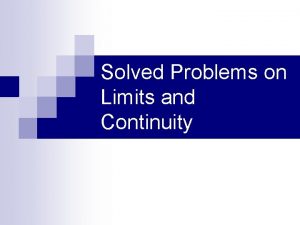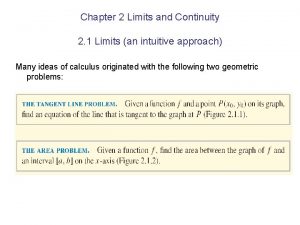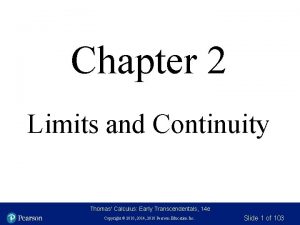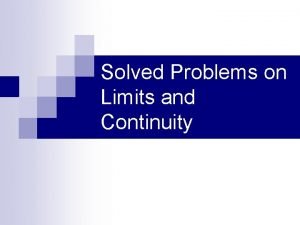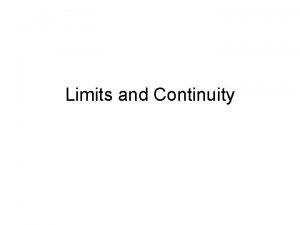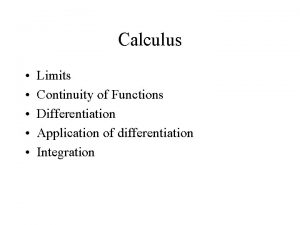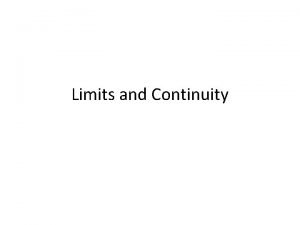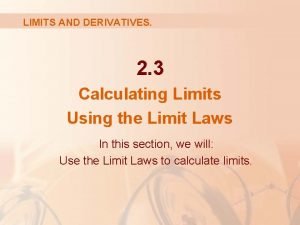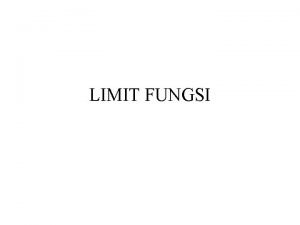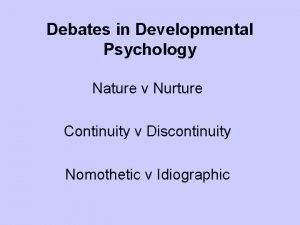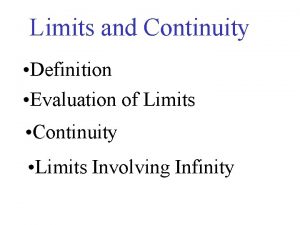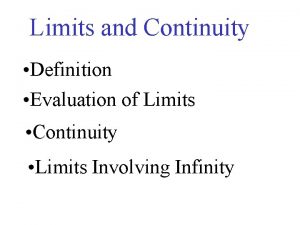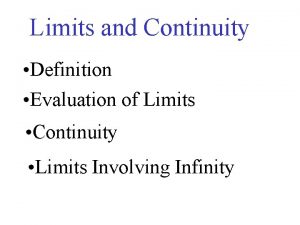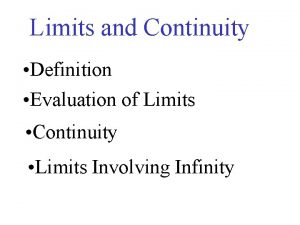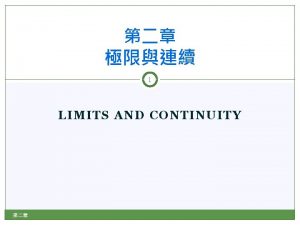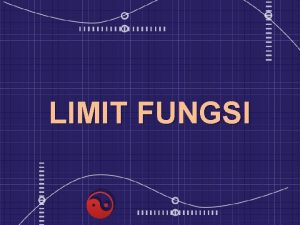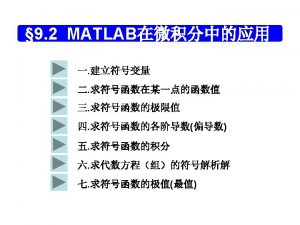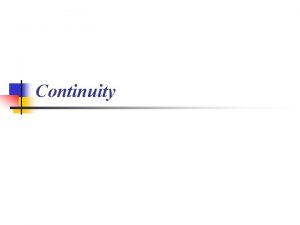Limits and Continuity Definition Limit of a Function

















- Slides: 17

Limits and Continuity

Definition: Limit of a Function of Two Variables Let f be a function of two variables defined, except possibly at (xo, yo), on an open disk centered at (xo, yo), and let L be a real number. Then: If for each ε > 0 there corresponds a δ > 0 such that:

1. Use the definition of the limit of a function of two variables to verify the limit (Similar to p. 904 #1 -4)

2. Find the indicated limit by using the given limits (Similar to p. 904 #5 -8)

3. Find the limit and discuss the continuity of the function (Similar to p. 904 #9 -22)

4. Find the limit and discuss the continuity of the function (Similar to p. 904 #9 -22)

5. Find the limit and discuss the continuity of the function (Similar to p. 904 #9 -22)

6. Find the limit and discuss the continuity of the function (Similar to p. 904 #9 -22)

7. Find the limit (if it exists). If the limit does not exist, explain why (Similar to p. 905 #23 -36)

8. Find the limit (if it exists). If the limit does not exist, explain why (Similar to p. 905 #23 -36)


9. Find the limit (if it exists). If the limit does not exist, explain why (Hint: think along y = 0) (Similar to p. 905 #23 -36)

10. Discuss the continuity of the functions f and g. Explain any differences (Similar to p. 906 #43 -46)

11. Use polar coordinates to find the limit [Hint: Let x = r cos(θ) and y = r sin(θ), and note that (x, y) -> (0, 0) implies r -> 0] (Similar to p. 906 #53 -58)

12. Use polar coordinates and L’Hopital’s Rule to find the limit (Similar to p. 906 #59 -62)

13. Discuss the continuity of the function (Similar to p. 906 #63 -68)

14. Find each limit (Similar to p. 906 #73 -78)
 Limit involving infinity
Limit involving infinity Limits and continuity problems with solutions
Limits and continuity problems with solutions Calculus chapter 2 limits and continuity answers
Calculus chapter 2 limits and continuity answers Thomas calculus limits and continuity
Thomas calculus limits and continuity Limits and continuity
Limits and continuity Limits and continuity
Limits and continuity Application of limits and continuity
Application of limits and continuity Kekontinuan fungsi
Kekontinuan fungsi Shape 65
Shape 65 If lclp is negative number, we set the lclp = 0. why?
If lclp is negative number, we set the lclp = 0. why? Natural variations operations management
Natural variations operations management Calculating limits using the limit laws
Calculating limits using the limit laws Absolute continuity implies uniform continuity
Absolute continuity implies uniform continuity Gambarlah grafik fungsi f(x) limit
Gambarlah grafik fungsi f(x) limit Fundamental trig limit
Fundamental trig limit Limits of two variables
Limits of two variables Continuity vs discontinuity child development examples
Continuity vs discontinuity child development examples Continuity and change over time example
Continuity and change over time example

